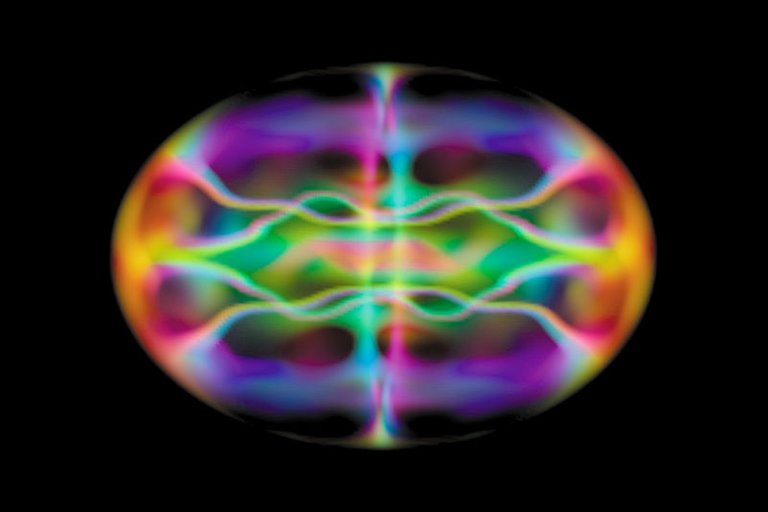Computer simulation of vortices in Bose-Einstein condensate
Credit: NIST
Cosmologists think that in its first moments, the Universe ballooned from a subatomic size to bigger than a grapefruit. But testing theories about this period is difficult, because researchers cannot recreate such extreme conditions.
Now, physicists have emulated this cosmic expansion in a lab by creating a model Universe made of ultracold atoms, they report in a paper published last week in Physical Review X1. By rapidly increasing the size of a ring-shaped cloud of atoms, they induced behaviour in the system that mimicked how light waves were stretched and damped as space expanded in the early Universe.
The system has so far emulated these familiar phenomena. But in the future, it could address thornier questions, such as how changes in the density of the early Universe led to the formation of galaxies and other structures, says Silke Weinfurtner, a quantum-gravity physicist at the University of Nottingham, UK, who was not involved in the study. “It’s a very useful platform and an exciting experiment,” she says.
The team, mostly from the US National Institute of Standards and Technology (NIST) in Gaithersburg, Maryland, used a state of matter known as a Bose–Einstein condensate. The researchers used hundreds of thousands of atoms which, when cooled to a few billionths of a degree above absolute zero, acted like waves whose states overlapped to form a single quantum system. Physicists have previously used similar systems to mimic black holes in the laboratory and to model high-temperature superconductors.
Mirrors of the past
Sound waves travelling through a Bose–Einstein condensate obey the same equations that describe how light would have moved through empty space at the dawn of the Universe, says co-author Stephen Eckel, an atomic physicist at NIST. The researchers used lasers to trap the atoms in a ring and controlled the beams with an array of mirrors that allowed them to manoeuvre the pinned particles. To mimic the Universe’s expansion, they increased the radius of the ring at the speed of sound — which was “experimentally challenging”, says Weinfurtner. The researchers then introduced sound waves into the system and took snapshots of how they evolved as the ring expanded.
The team saw the lengths of the sound waves increase as the ring grew. This behaviour closely mimicked a phenomenon known as redshift, in which the expansion of space gradually stretches light and so increases its wavelength. They also saw the intensity of the waves decrease during expansion, mirroring an effect known as Hubble friction, which describes how the amplitude of light waves in the early Universe would have fallen as they lost energy to the expanding space.
Finally, the team observed signs of a more complex effect known as preheating. Cosmologists think that preheating occurred at the end of inflation, when energy involved in the initial rapid expansion dissipated to create the range of particles we see today. In the ultra-cooled atoms, when expansion stopped, the waves sloshed back and forth before dissipating through a series of whirlpools into waves that travelled around the ring.
This redistribution of energy was reminiscent of preheating, says Gretchen Campbell, a physicist at NIST who led the work. But it happened faster than they had initially predicted, and in a way that didn’t directly mirror any cosmological theory, she says. “We saw things that looked like what we were looking for, but, under the hood, it was a little more complicated.”
In the future, the team hopes to use ultracold atoms to measure Hubble friction more precisely, and to study the formations made by reheating, as well as look for new cosmological phenomena. Whether atomic physicists will teach cosmologists anything new, Campbell says, she doesn’t yet know. “The hope is that the analogy will become stronger and our system can become a nice test bed,” she says. “These kinds of collaborations can help us both to see things in new ways.”
